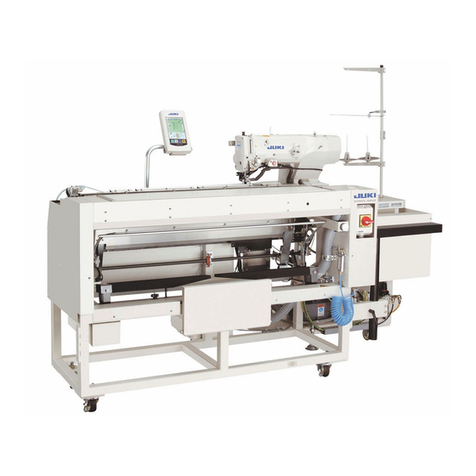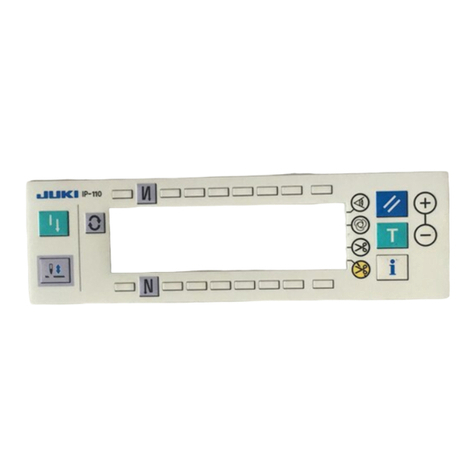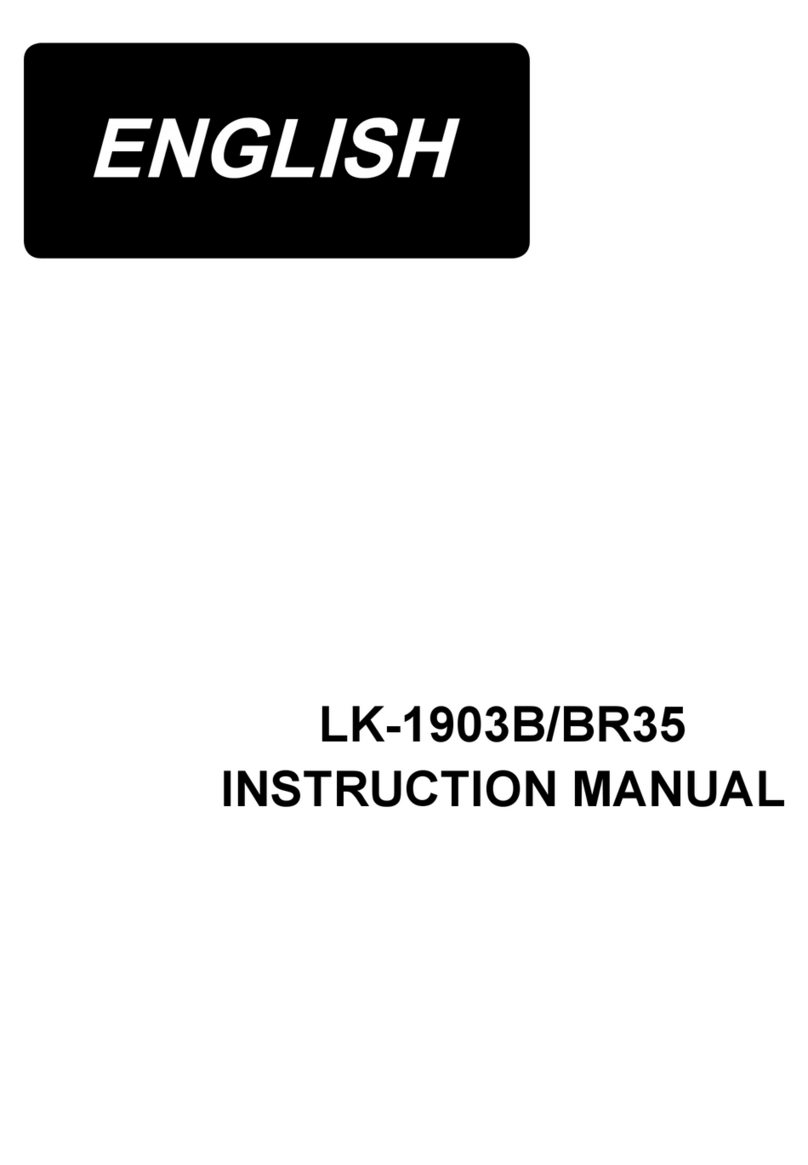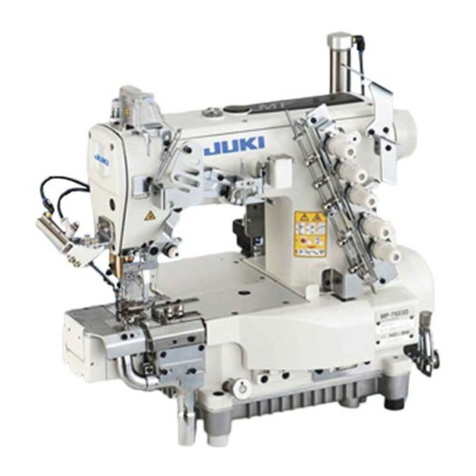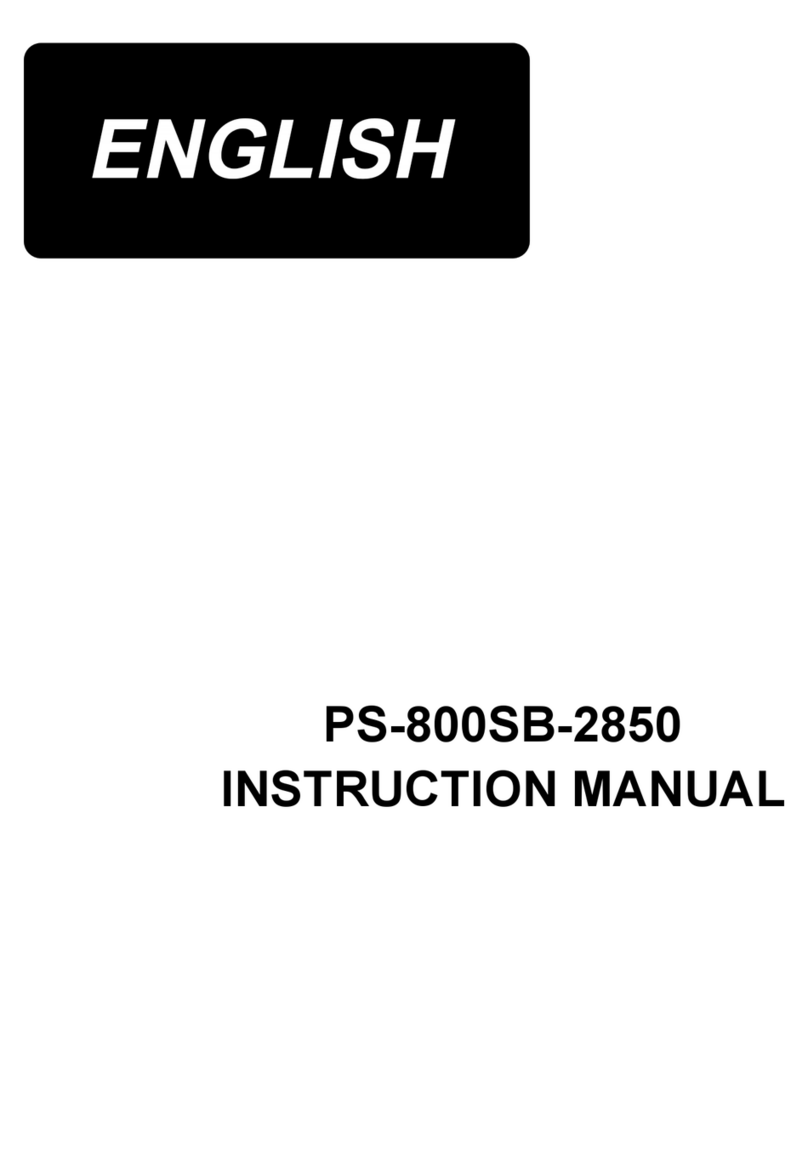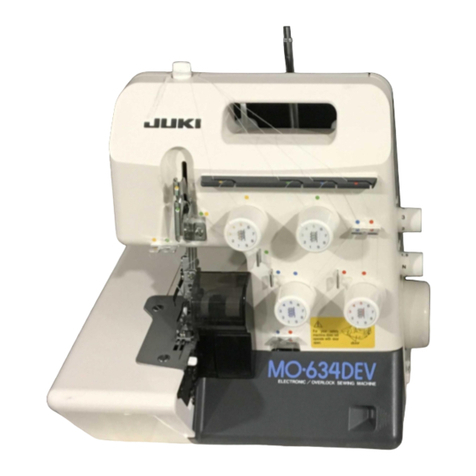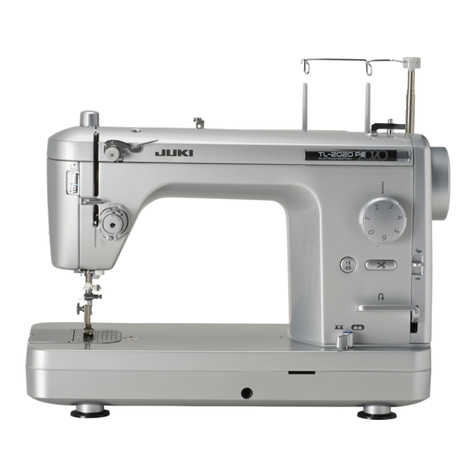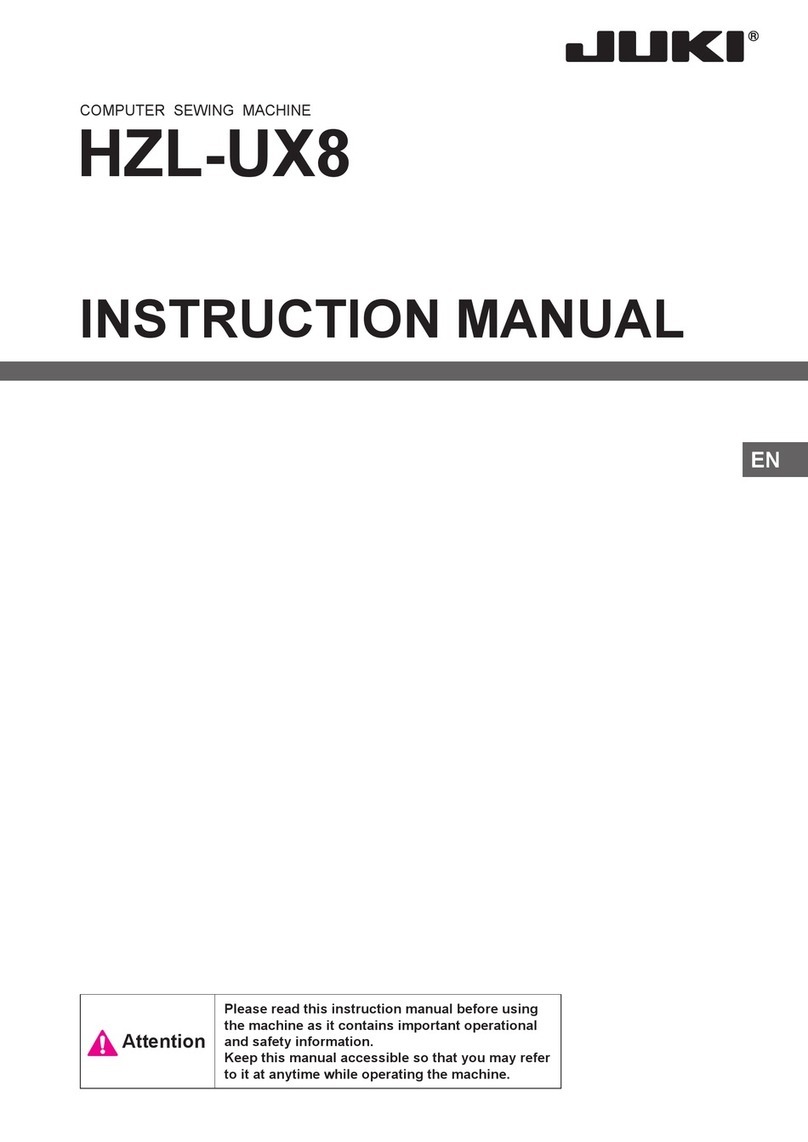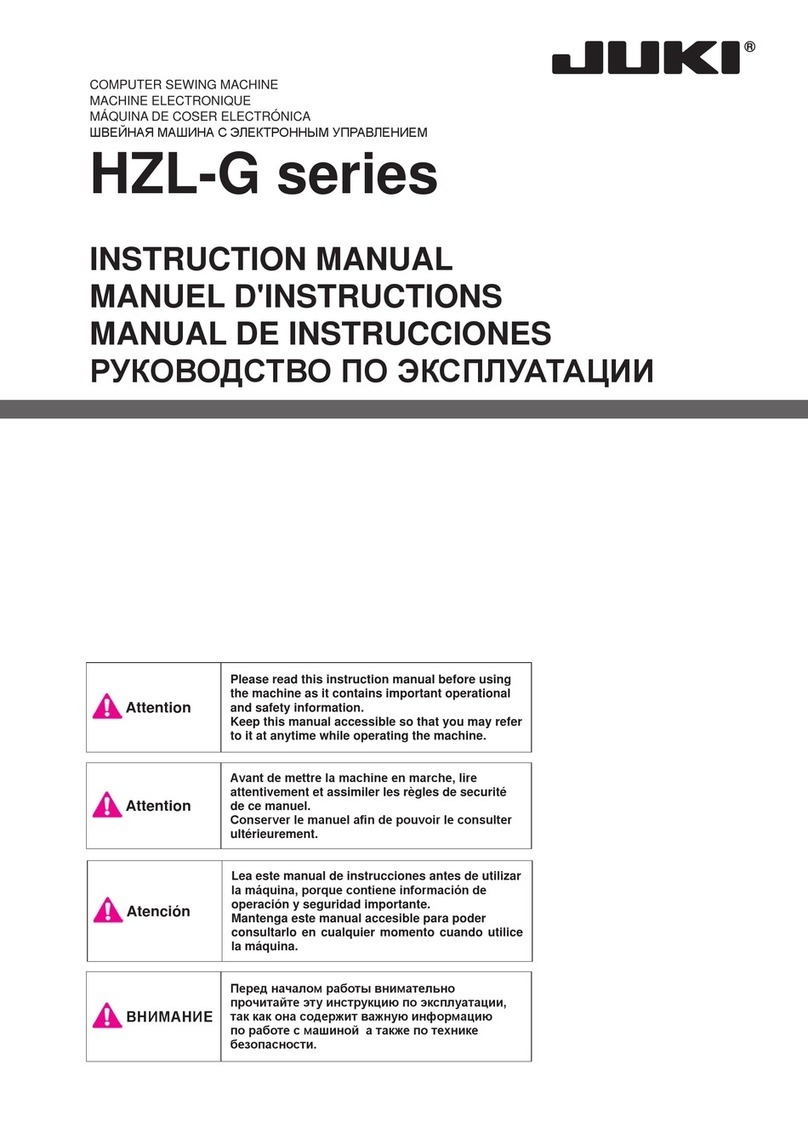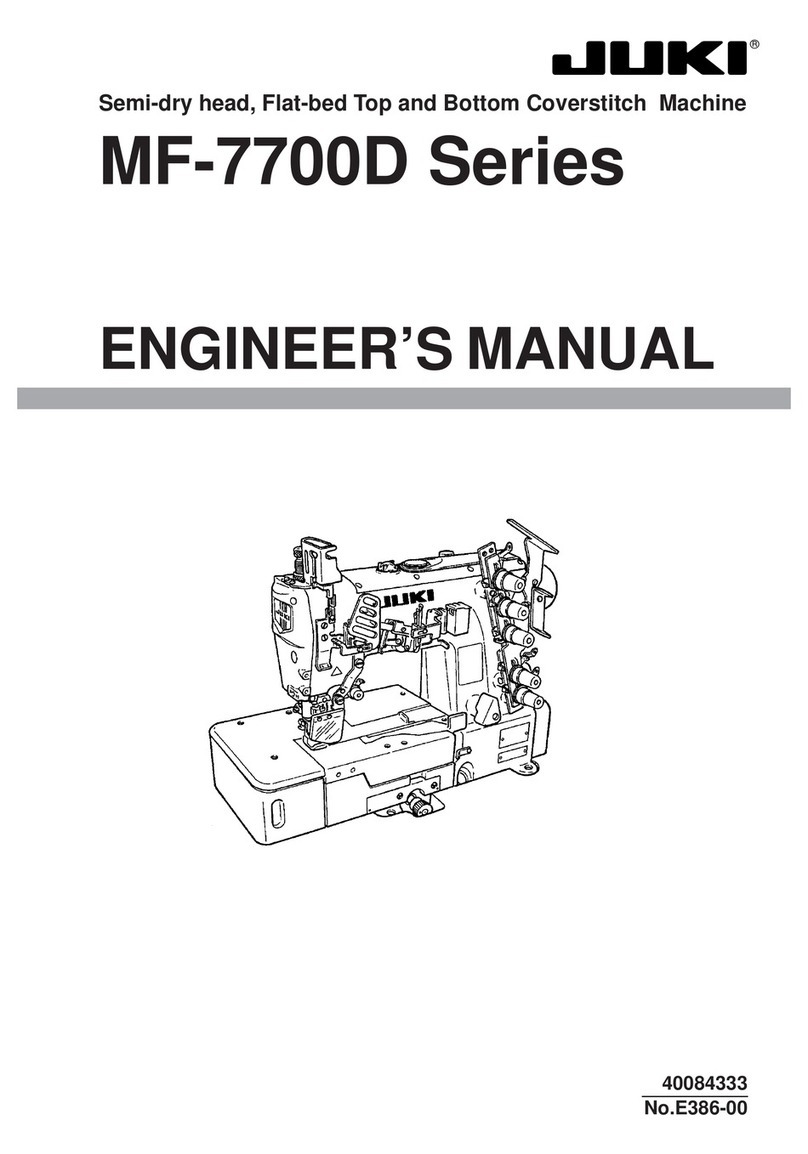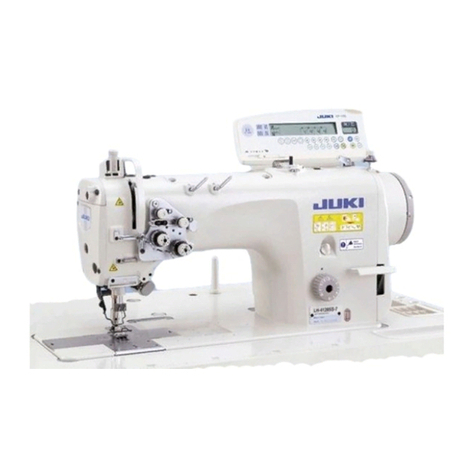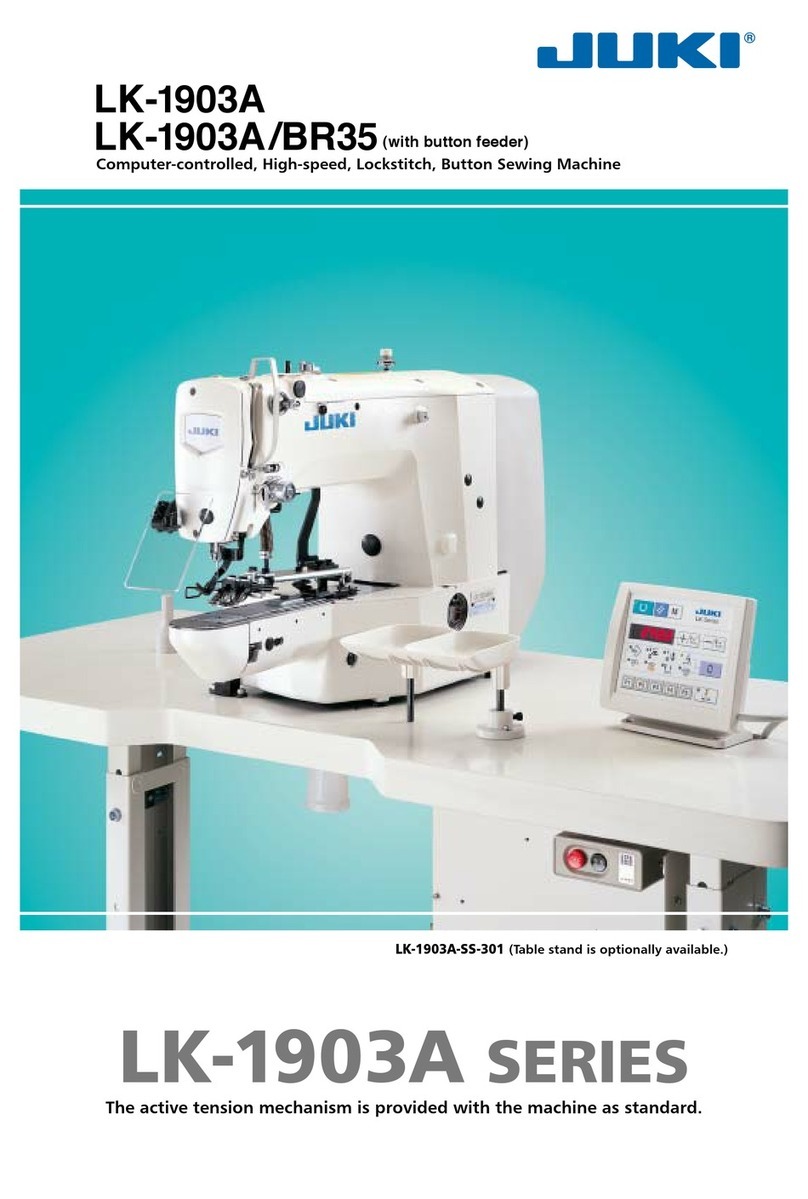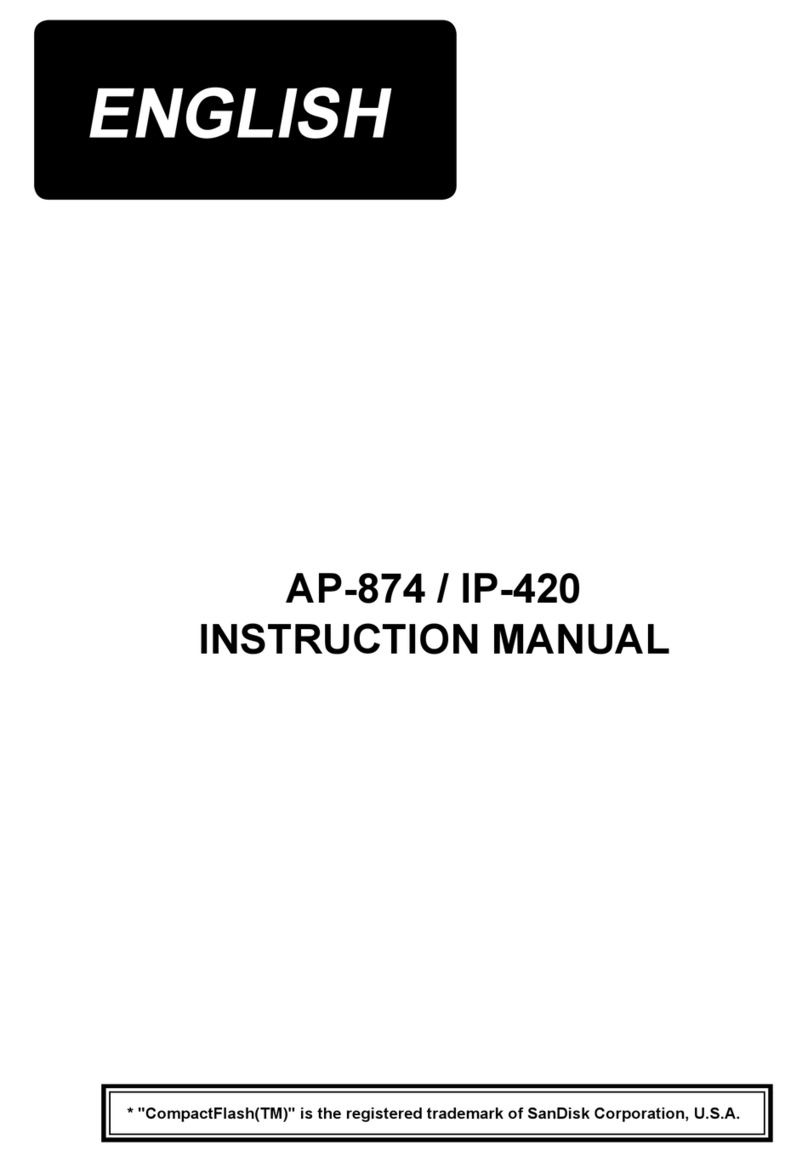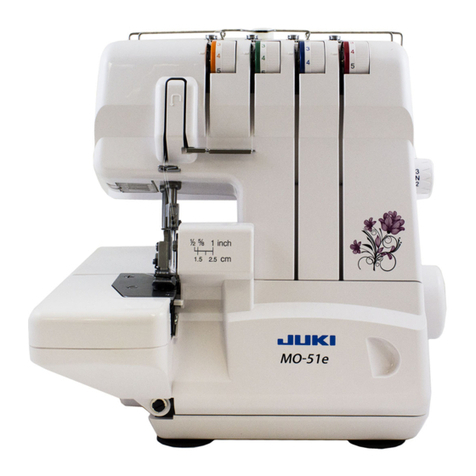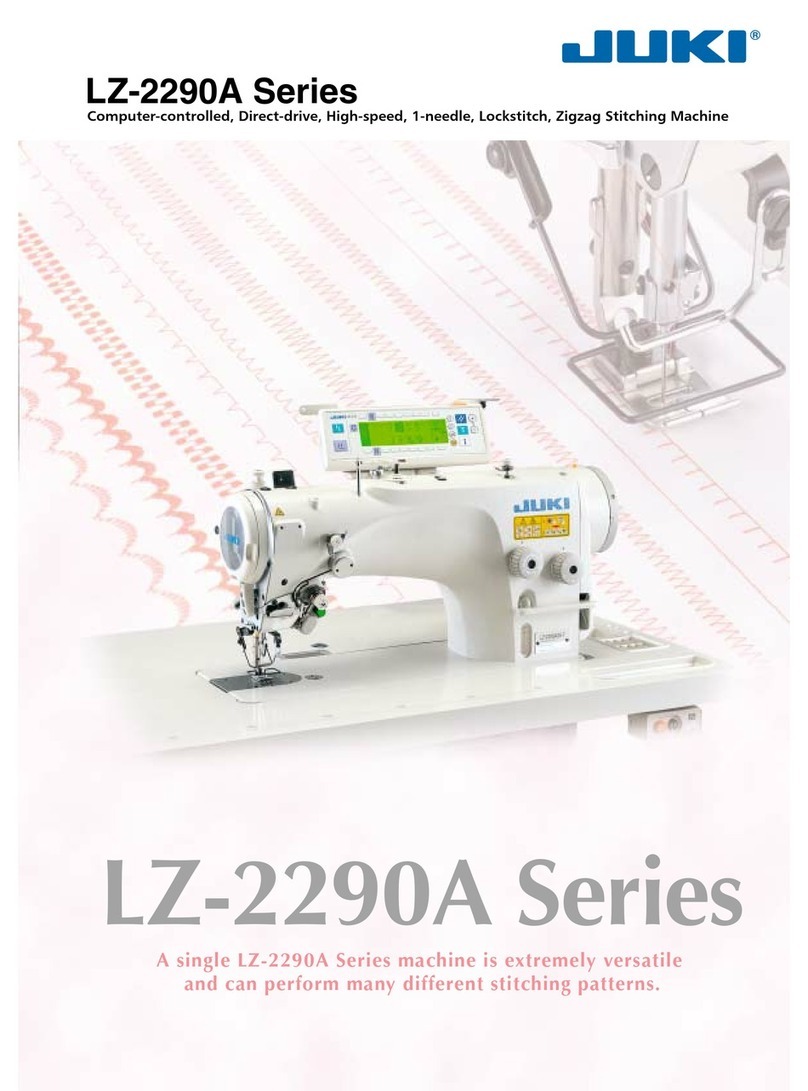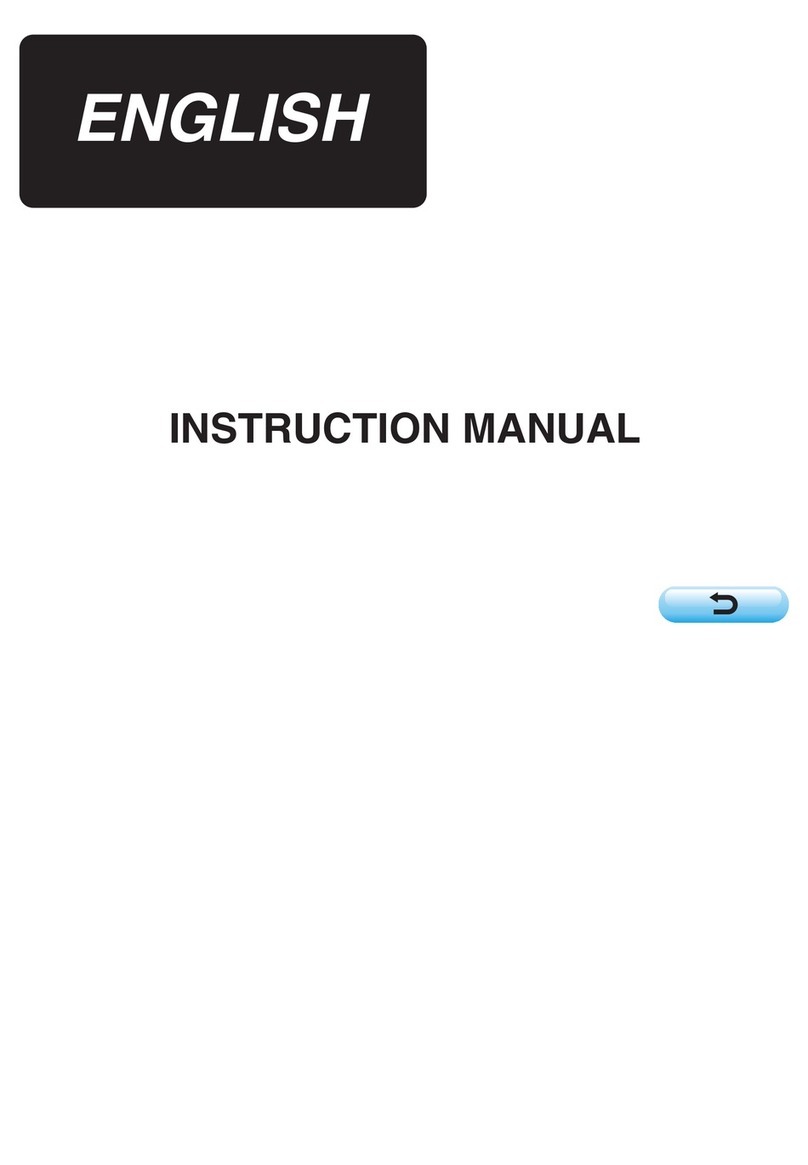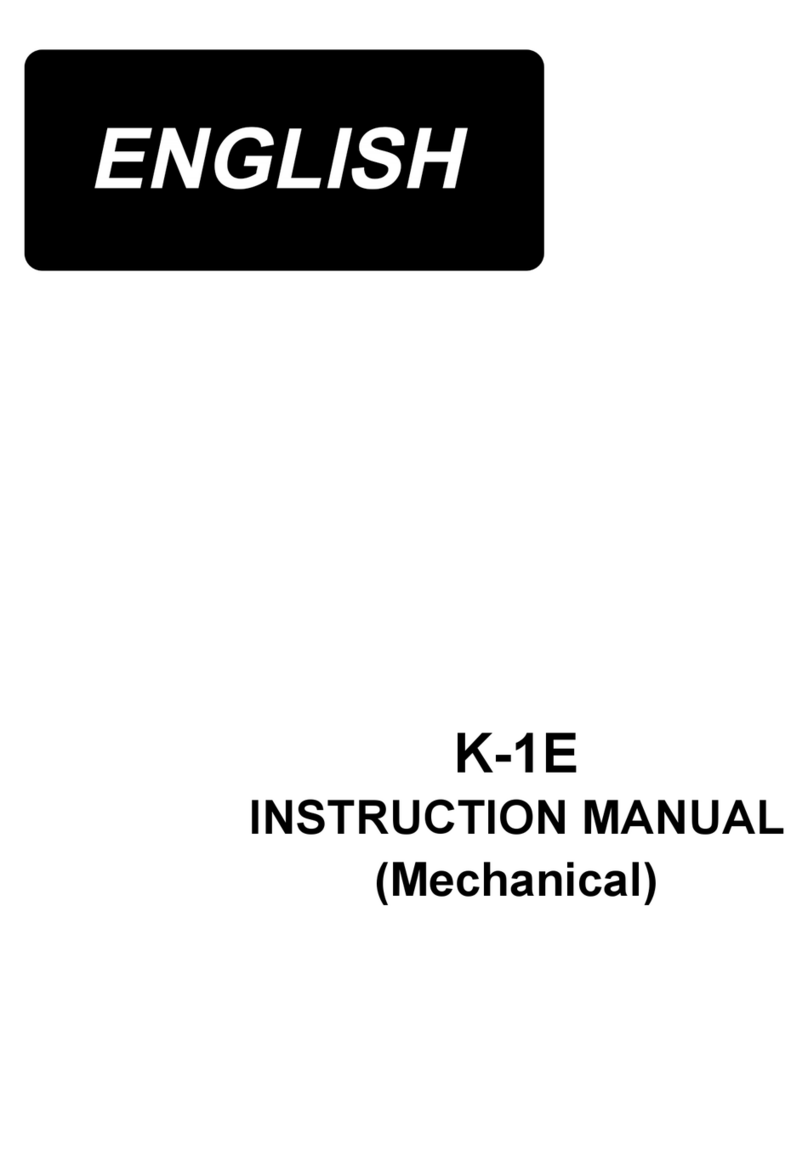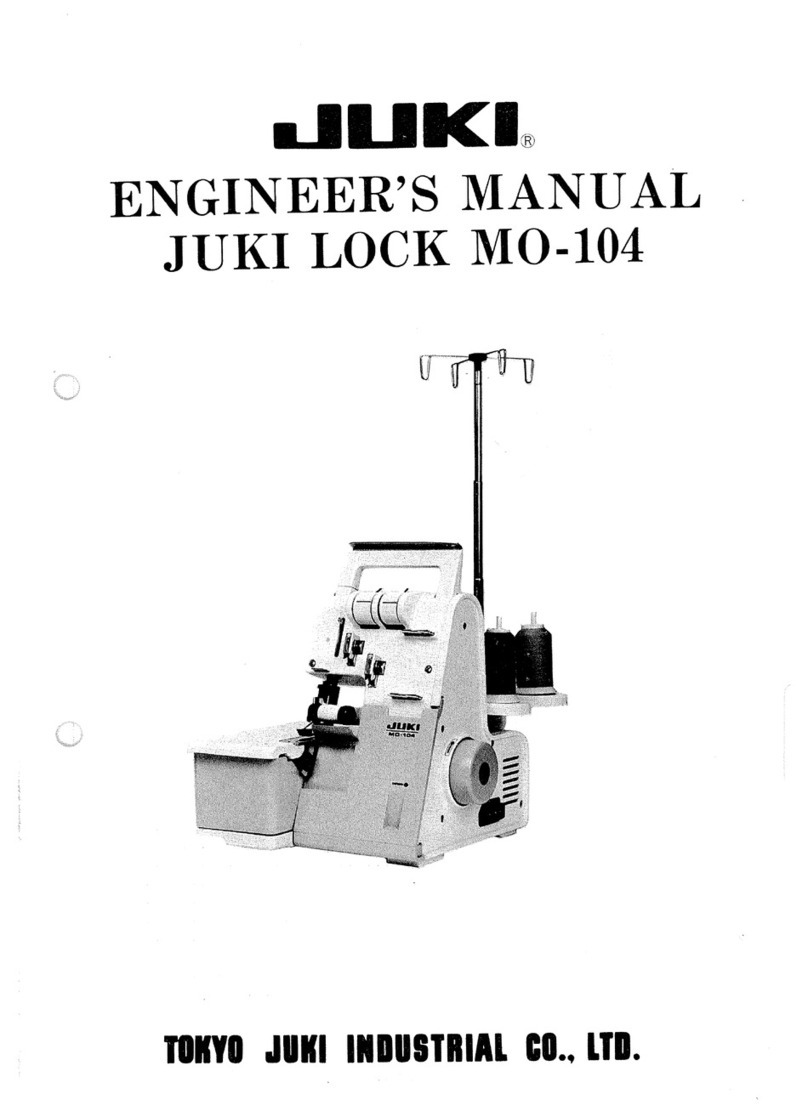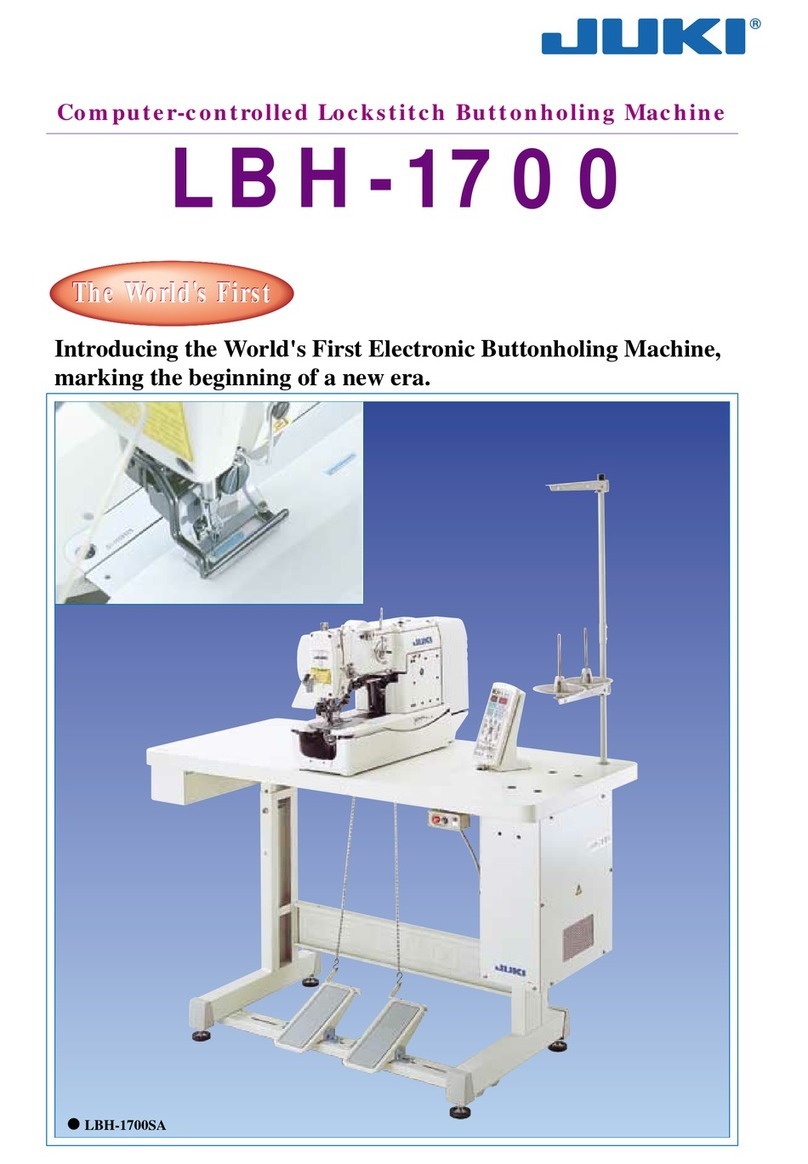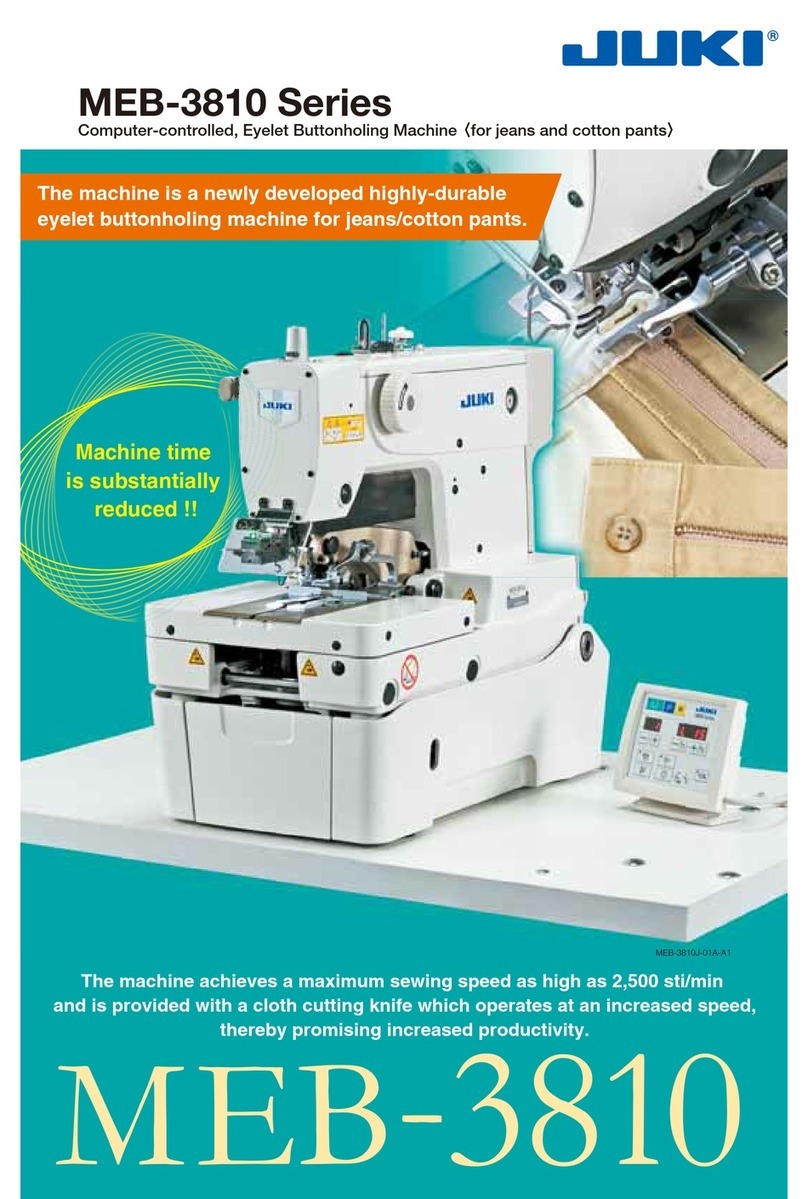– 5 –
(2) List of operation panels of CP-180
No. Description
Power indication LED : Lights up when the power switch is turned ON.
Max. speed limit variable resister : Maximum speed is limited when this resister is moved in the left direction ( ).
Pattern selector switch : Used for selecting a pattern from among the four different patterns.
Automatic double reverse stitching at the start of sewing switch : Used for turning ON / OFF the automatic double reverse stitching at the start of sewing.
Automatic double reverse stitching at the end of sewing switch : Used for turning ON / OFF the automatic double reverse stitching at the end of sewing.
Automatic reverse stitching at the start of sewing switch : Used for turning ON / OFF the automatic reverse stitching at the start of sewing.
Automatic reverse stitching at the end of sewing switch : Used for turning ON / OFF the automatic reverse stitching at the end of sewing.
Switches for setting the number of stitches : Used for setting the number of stitches to be sewn in processes A through D.
Material edge sensor ON / OFF switch : Rendered effective when the material edge sensor is installed on the machine.
Used for setting whether or not the material edge sensor is used during sewing.
One-shot automatic stitching switch :
Rendered effective when the material edge sensor is installed on the machine or when the sewing
machine is operated under the constant-dimension stitching mode. Start the sewing machine with this switch, and the sewing machine will run
automatically until the material edge is detected or the end of a constant-dimension stitching is reached.
Automatic thread trimming switch :
Rendered effective when the material edge sensor is installed on the machine or when the sewing
machine is operated under the constant-dimension stitching mode. Even keep depressing the front part of the pedal, the sensor can detect the
material edge, or after the completion of the constant-dimension stitching mode, the machine will automatically perform thread trimming.
Thread trimming prohibition switch : Used for prohibiting thread trimming at any occasion.
Bobbin thread counter/thread trimming counter : Bobbin thread counter/thread trimming counter can be changed over by the
function of the control box main body.
Bobbin thread counter : Indicates the amount detecting device is installed on the machine, the counter indicates the number of times
of detecting.
Thread trimming counter : Every time thread trimming is performed, the counter value is added.
Counter reset switch : Used for returning the value shown on the bobbin thread counter to the initial value.
[0] is selected for the setting when thread trimming counter is selected.
Bobbin thread amount setting switch : Used for setting the amount of bobbin thread.
Needle bar stop position changeover function to be available when the needle up/down compensating switch/pedal is in
neutral state.
Needle up/down compensating switch : This switch is used for each needle up/down compensating stitching.
[Changeover selection of needle bar stop position when the pedal is in its neutral position]
Pressing the needle up/down compensation switch, turn ON the power to the machine, and the needle bar stop position when the pedal
is in its neutral position is changed over to down position/up position.
Confirmation of the stop position can be performed on the panel.
When up position stop is specified : “ nP UP “
When down stop position is specified : “ nP Lo “
Information switch
Used for calling the production support function (by keeping the switch held pressed for one seconds).
